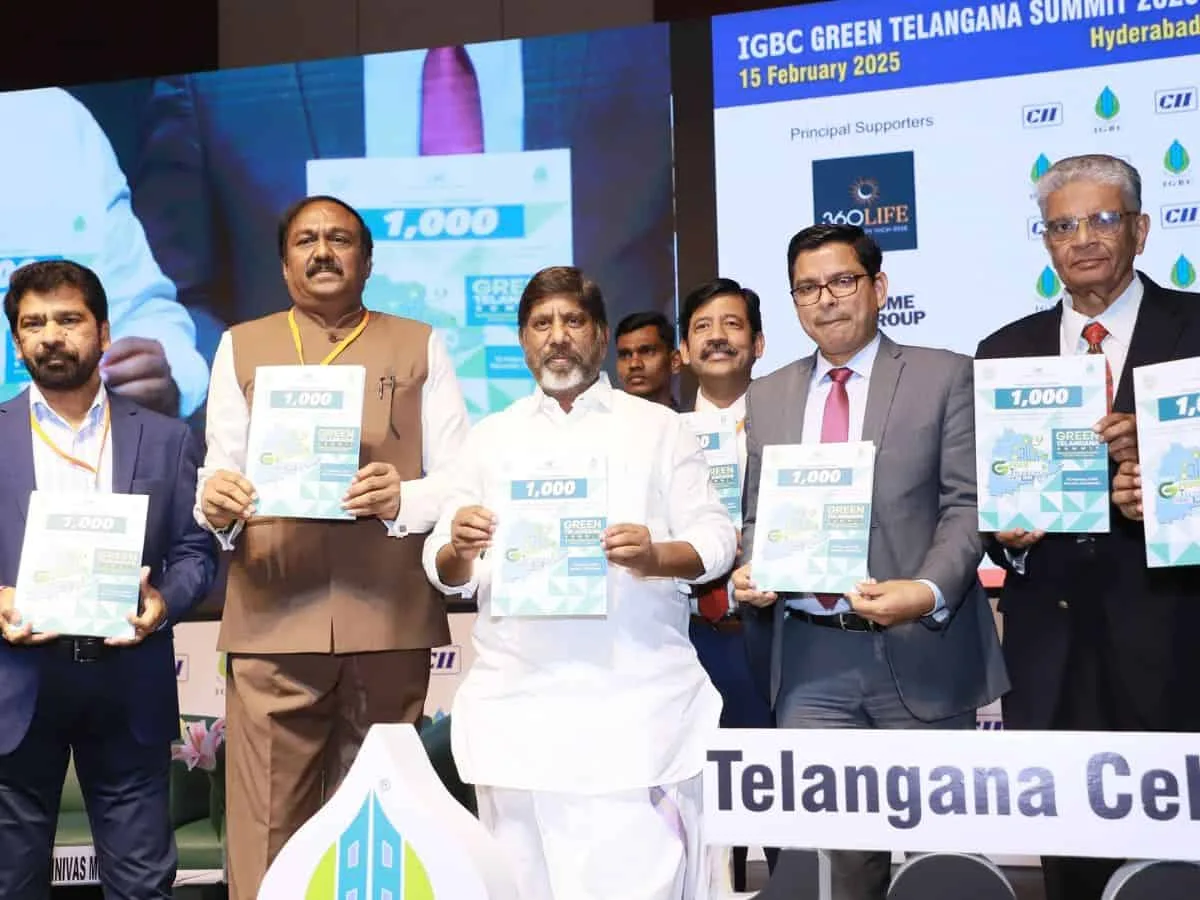Hyderabad: Telangana deputy chief minister Mallu Bhatti Vikramarka has emphasized the need to prevent the pollution issues currently faced by Delhi from affecting Hyderabad.
During his address at the “Green Telangana Summit-2025,” organized by the Confederation of Indian Industry (CII) and the Indian Green Building Council (IGBC) in Madhapur, he outlined the government’s commitment to transforming Hyderabad into a green city through strategic policy decisions.
Health priority over revenue: Dy CM
Vikramarka stated that the health of city residents is a priority over revenue generation, indicating that the government is actively working to introduce electric buses and reduce registration charges for electric vehicles (EVs) to promote their use.
He expressed confidence in developing Hyderabad as a “Future City” and highlighted the significance of reviving the Musi River, describing it as a milestone in the state’s history. He assured that clean water would flow through the river, turning it into a blessing for the city.
The deputy chief minister acknowledged builders and real estate developers as vital contributors to wealth creation and state development, assuring them that decisions affecting their operations would be made without causing inconvenience.
C Shekhar Reddy, National Vice Chairman of IGBC, noted that Telangana ranks fifth in the country for green building construction and could reach first place with additional incentives for developers.
Net zero city
A memorandum of understanding was signed between TGIIIC and IGBC to develop a net-zero city, with signatures from TGIIIC MD Vishnuvardhan Reddy and IGBC National Vice Chairman Reddy. The event also marked the release of a special book showcasing 1,000 registered projects at IGBC.
This initiative comes at a time when air pollution levels in Hyderabad are rising, although they are not yet at the critical levels seen in Delhi.
The Telangana State Pollution Control Board has reported that while air quality is deteriorating, it remains below national averages for major pollutants like PM 2.5 compared to Delhi’s alarming rates.







